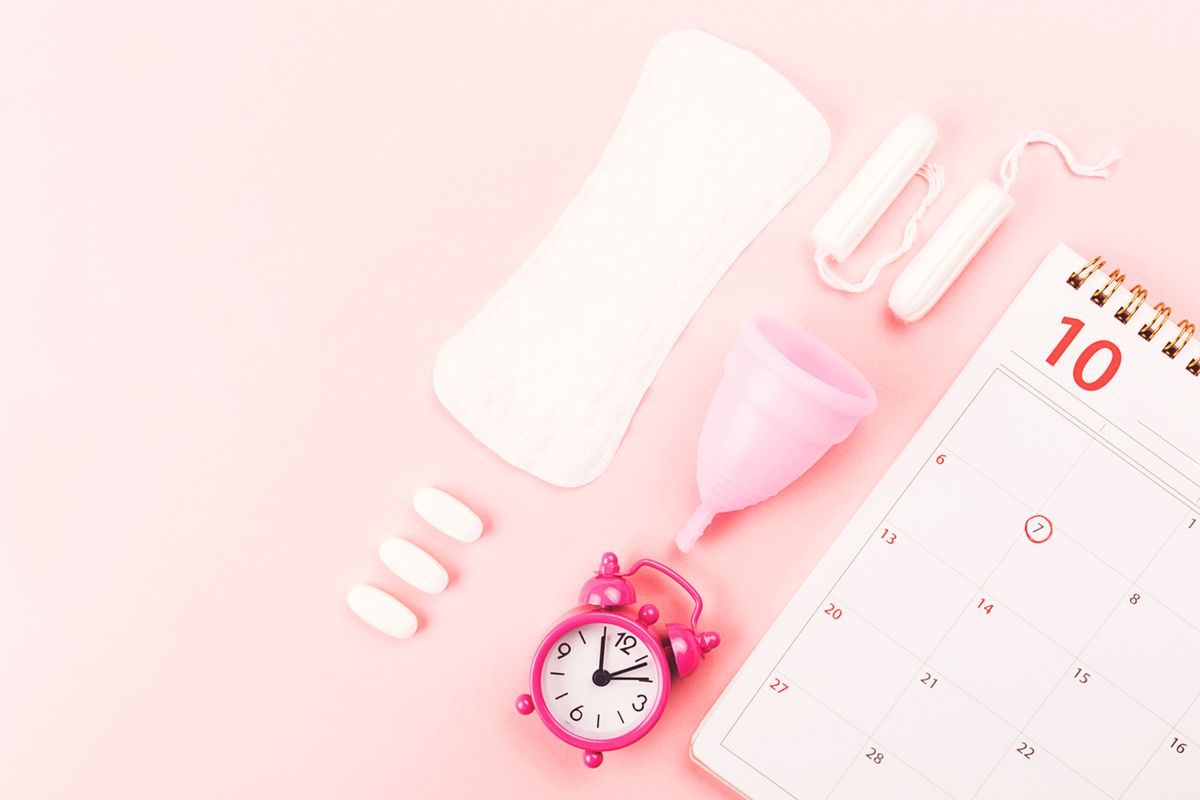Sanitary pads: Sanitary pads, also known as sanitary napkins or menstrual pads, were one of the earliest forms of feminine hygiene and are still widely used today. Offered in various lengths and absorbancy levels, pads are often preferred by women on light-flow days or for when they might be spotting between periods. Some women combine a tampon with a pad for extra protection. The disadvantages associated with sanitary pads are that some women find the product uncomfortable or find that it isn't suitable for certain types of physical activity.
In one study evaluating women's use of tampons or menstrual pads, the researcher found that while most women used tampons, women younger than 41 were far more likely to use them. She also found that even tampon users still pop on a pad, often wearing one along with tampons, and that about one in four women in perimenopause (ages 48 to 54) use tampons and/or pads between their periods.
Tampons: Tampons, which have been around since the 1930s, are the most popular choice of feminine protection for women younger than 41, according to a prominent study. Women often choose tampons for greater physical freedom during their period. Like sanitary pads, tampons are also offered in various sizes and levels of absorbency. It is recommended that women change tampons at least every four to eight hours, using the least absorbent type to manage menstrual flow. Tampons are not recommended in between periods. Some women may remember the connection between superabsorbent tampons and an outbreak of toxic shock syndrome (TSS) in the 1980s, but these "hyper absorbable" tampons were taken off the market and the incidence of toxic shock syndrome plummeted. However, there is some evidence that women who use tampons may have an increased risk of urinary tract infections.
Menstrual cups: Menstrual cups have been around as long as tampons but currently are not as widely used by women in the United States. There are two types of menstrual cups: The first is a soft, flexible, disposable cup that resembles a diaphragm. The second is a bell-shaped cup made of rubber (latex) or silicone that can be reused after thorough cleaning. Both types of menstrual cups are designed to collect menstrual fluid—rather than absorb it—for disposal later.
Some women prefer menstrual cups because they are a tampon alternative that can be safely worn up to 12 hours. One study found that women had to change the cup, on average, 2.8 times less frequently than when using tampons or pads, and that it leaked 0.5 times less often. Another study found that women who used tampons and had "average-to-heavy" menstrual flows were more likely to use a menstrual cup, as were women over age 40.
Women also say they like menstrual cups because they don't contain any chemicals, bleaches or fibers that could cause sensitivity or allergic reactions. Also, the soft, flexible menstrual cups can be worn during intercourse, making the experience a little less messy for women and their partners.
For some women, menstrual cups are more difficult to insert and remove than tampons but these difficulties can be solved with education about a woman's own body and insertion techniques. Also, one of the main disadvantages women mentioned in the survey was the need to clean the reusable cups, which is easily overcome by using a disposable menstrual cup.
No matter what feminine hygiene option you choose when menstruating, make sure to wash your hands before and after adding or changing your product of choice to prevent infections.
With all the choices for feminine protection, it's important that women are educated about their options so that they can better manage their menstrual cycle—rather than being managed by it.
- Period Products Are Not Tested Using Real Blood. (Yes. You Read That Right.) ›
- Free Bleeding: Why Some Menstruators Are Ditching Period Products ›
- Mistakes You're Making During Your Period ›
- Menstrual Cup ›
- Wondering What a Menstrual Cup Is and How You Use One? ›
- Feminine Hygiene Tips - HealthyWomen ›







